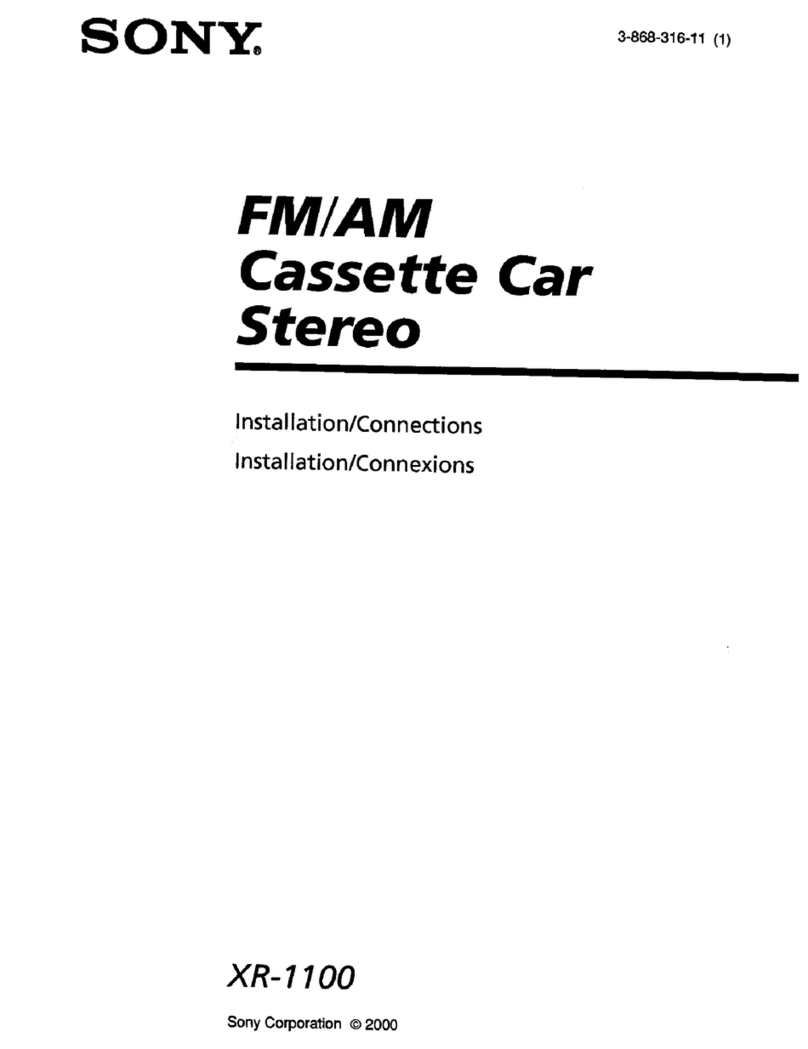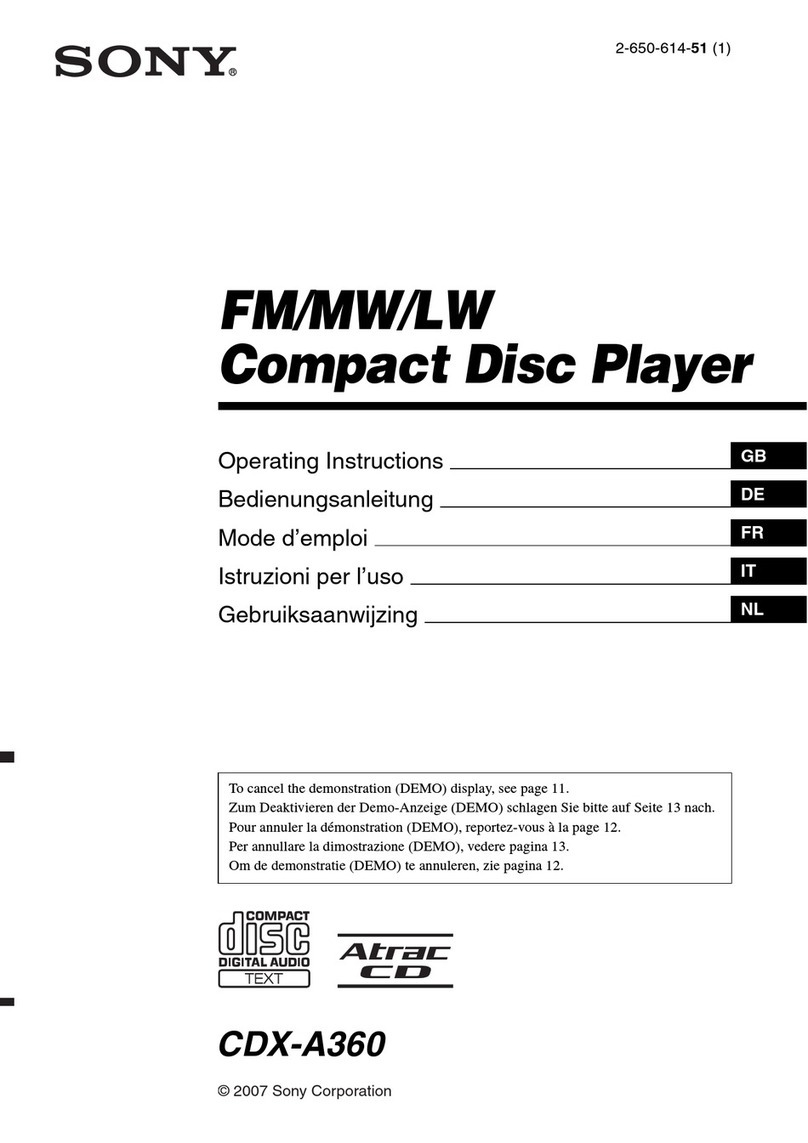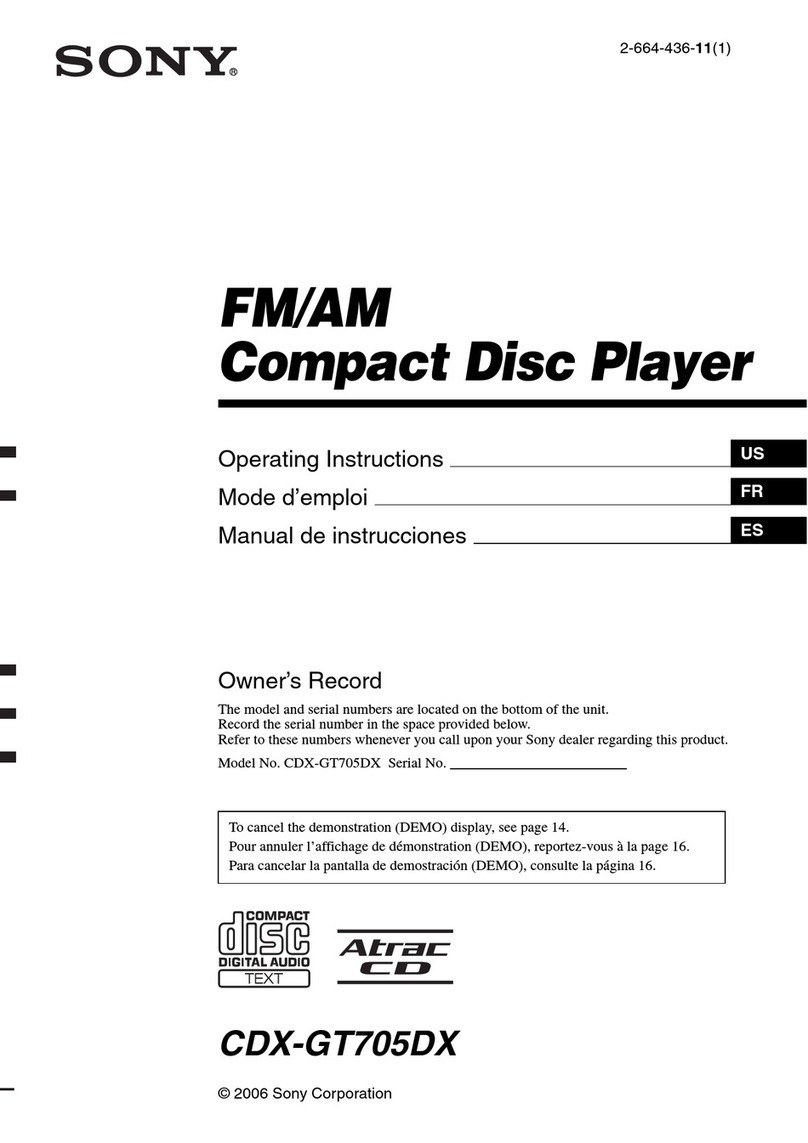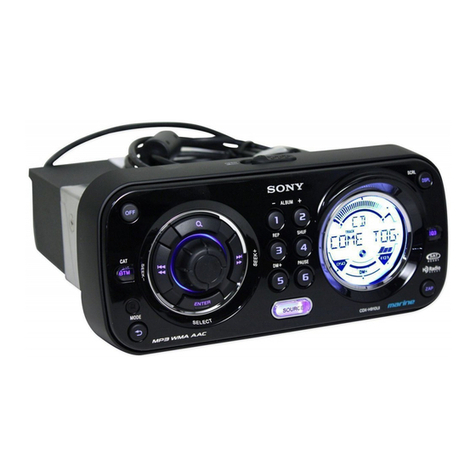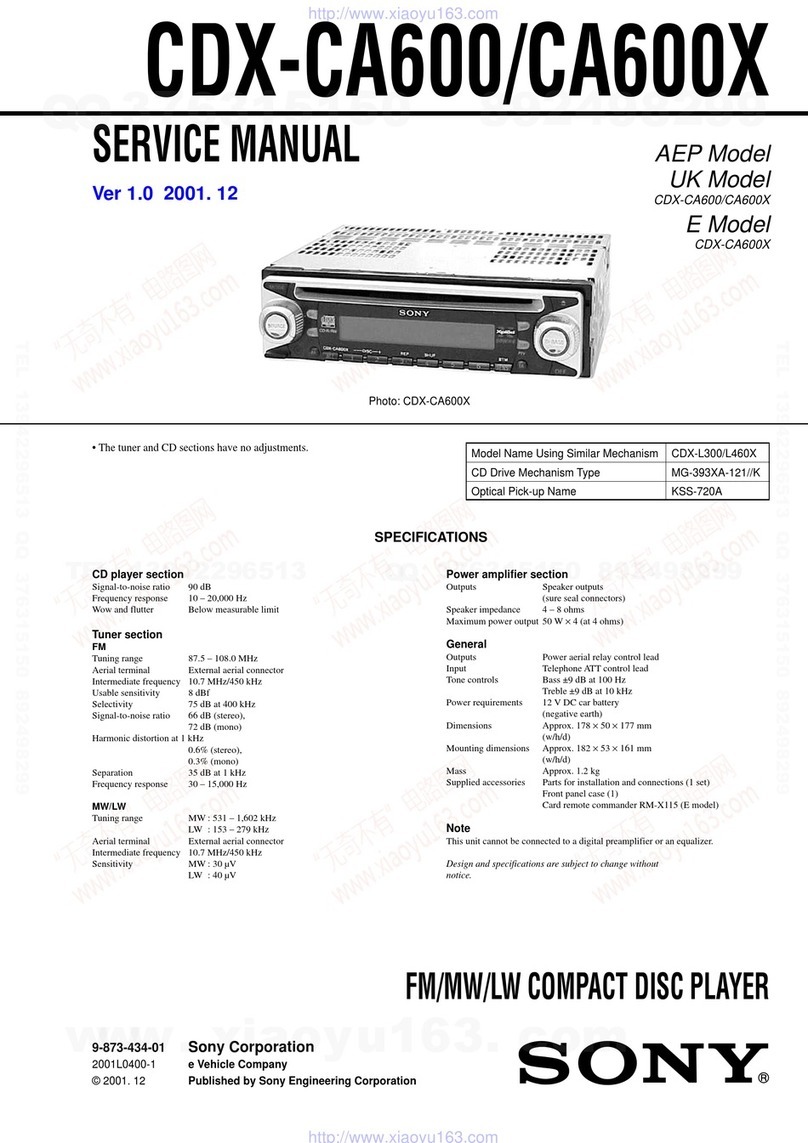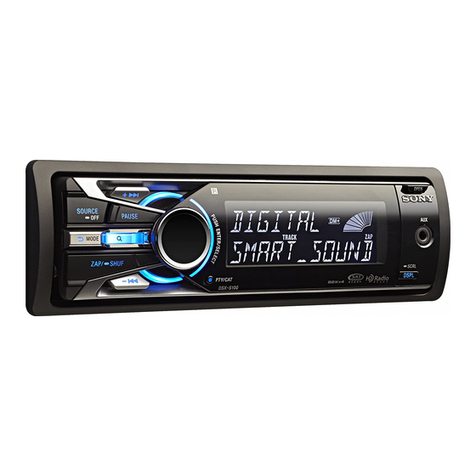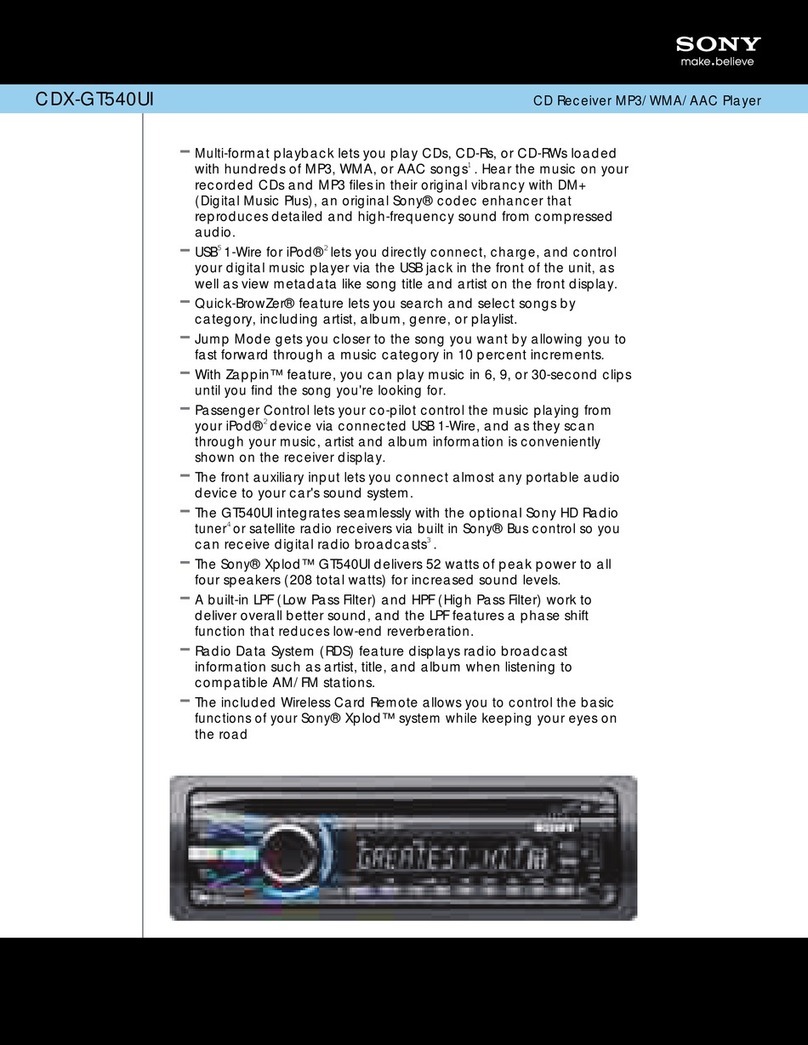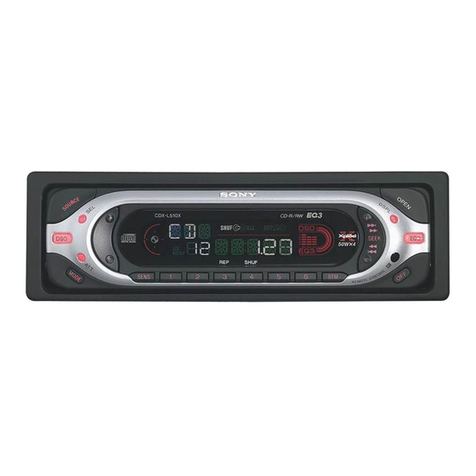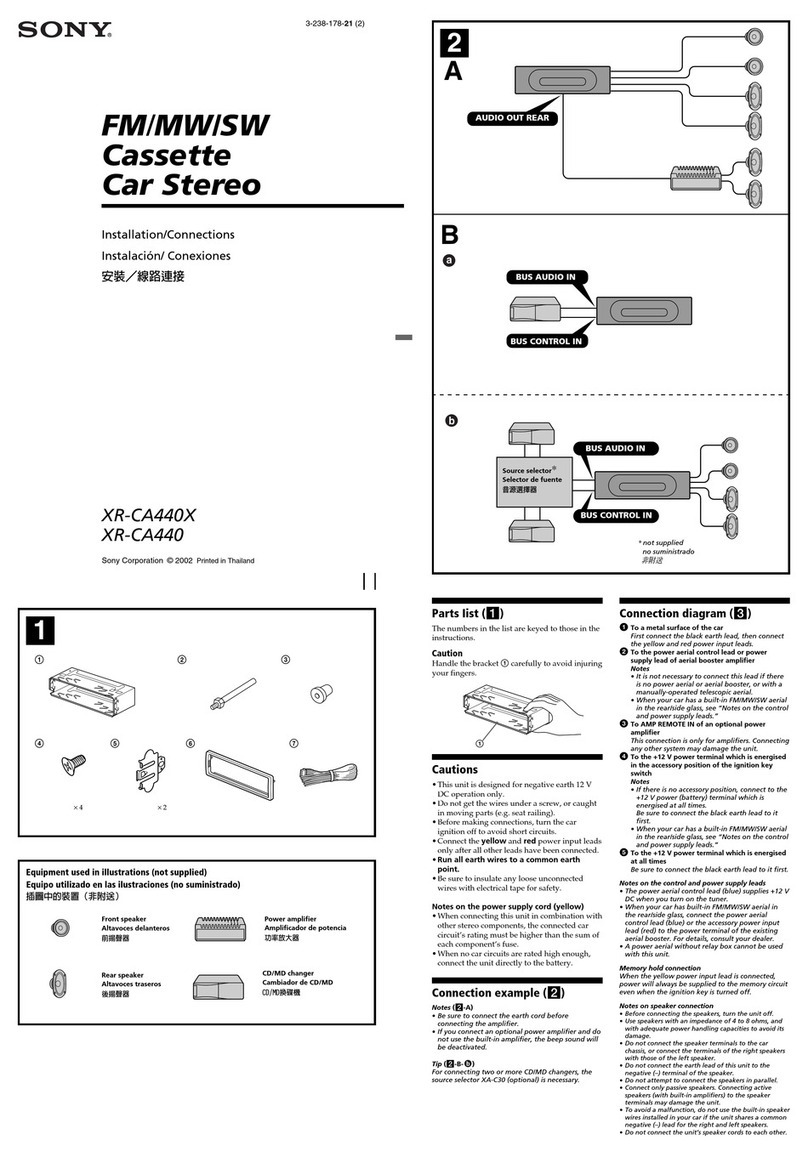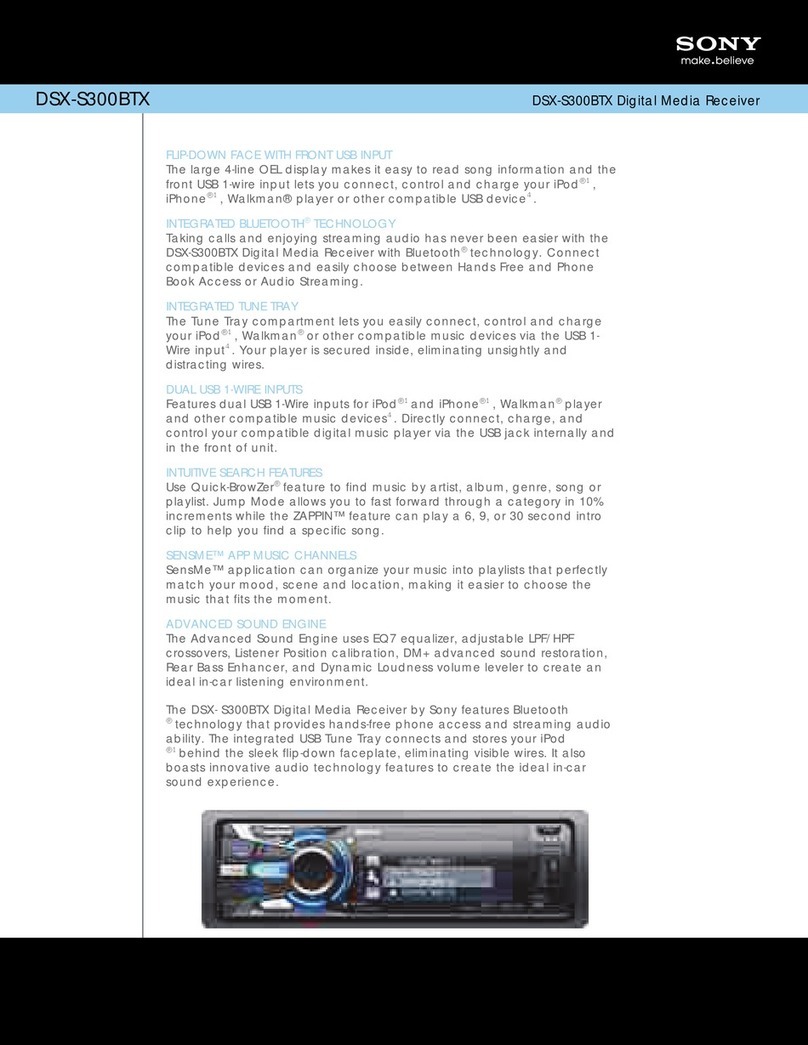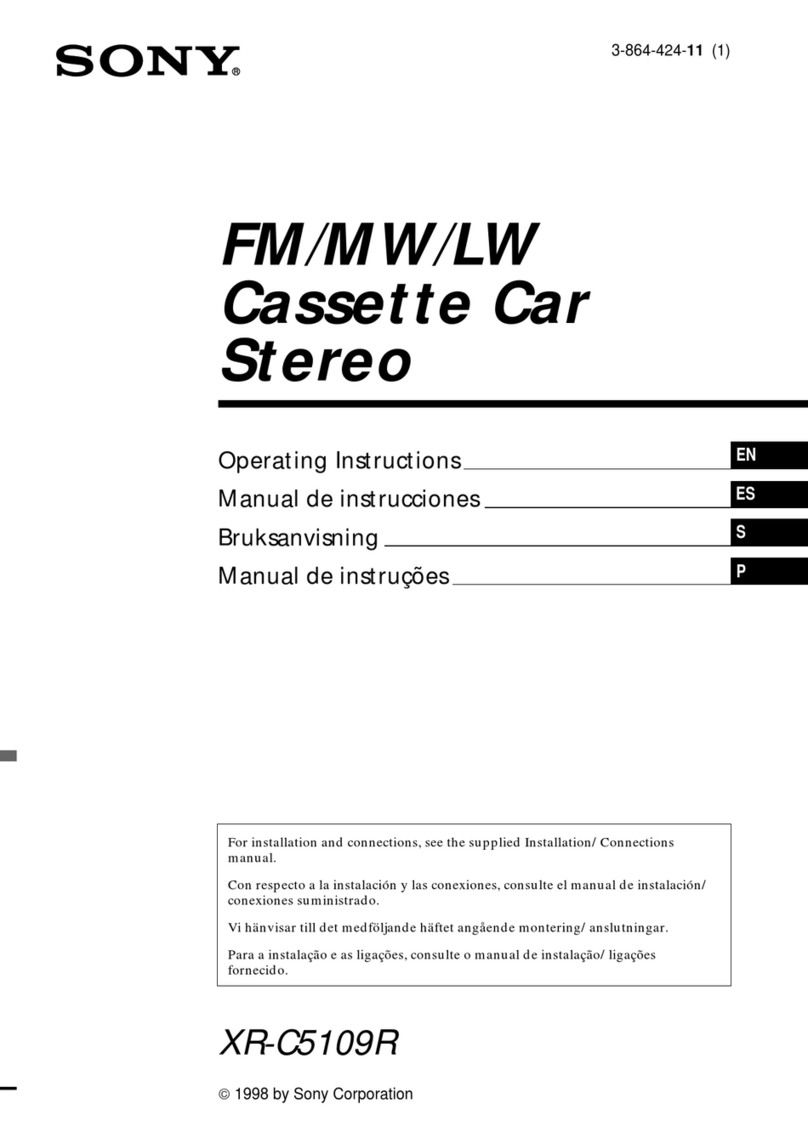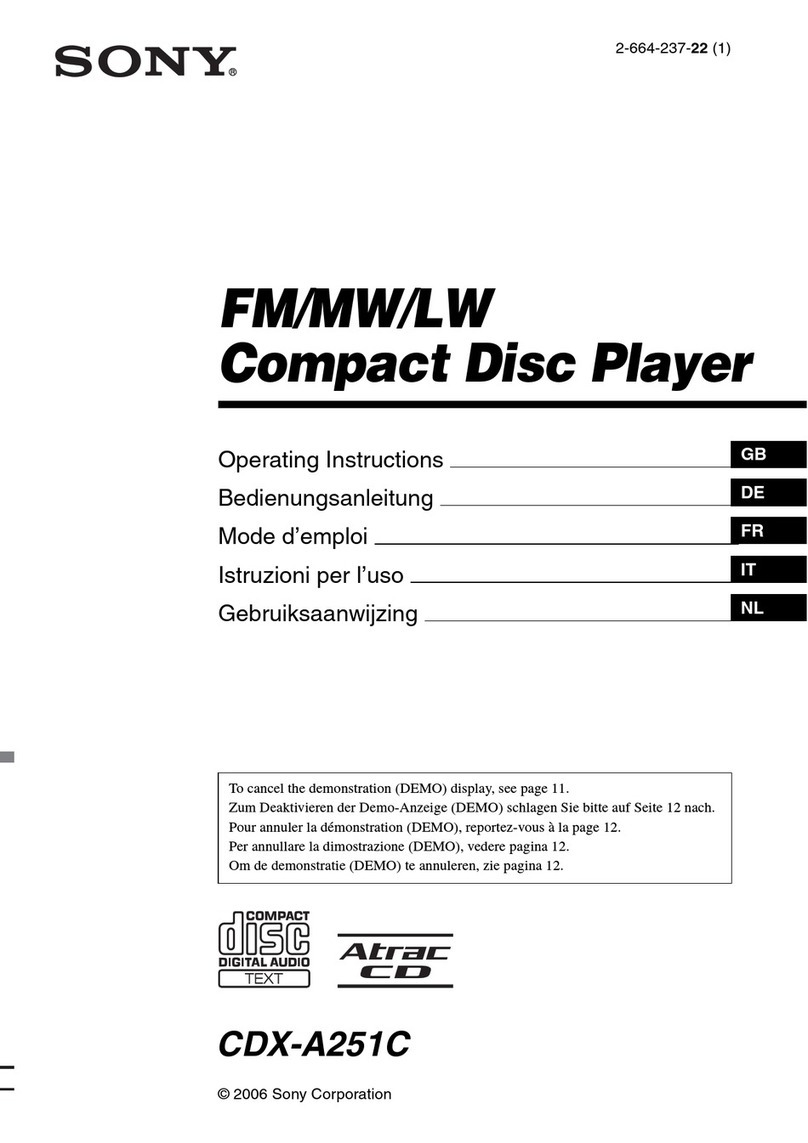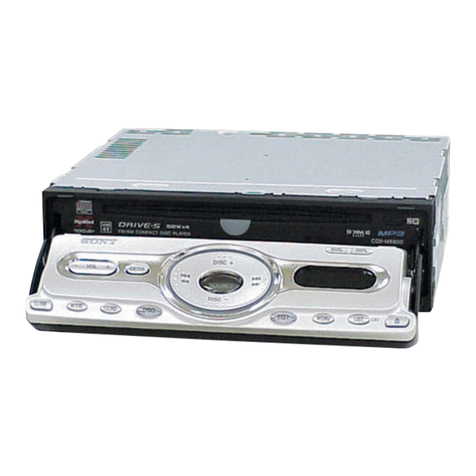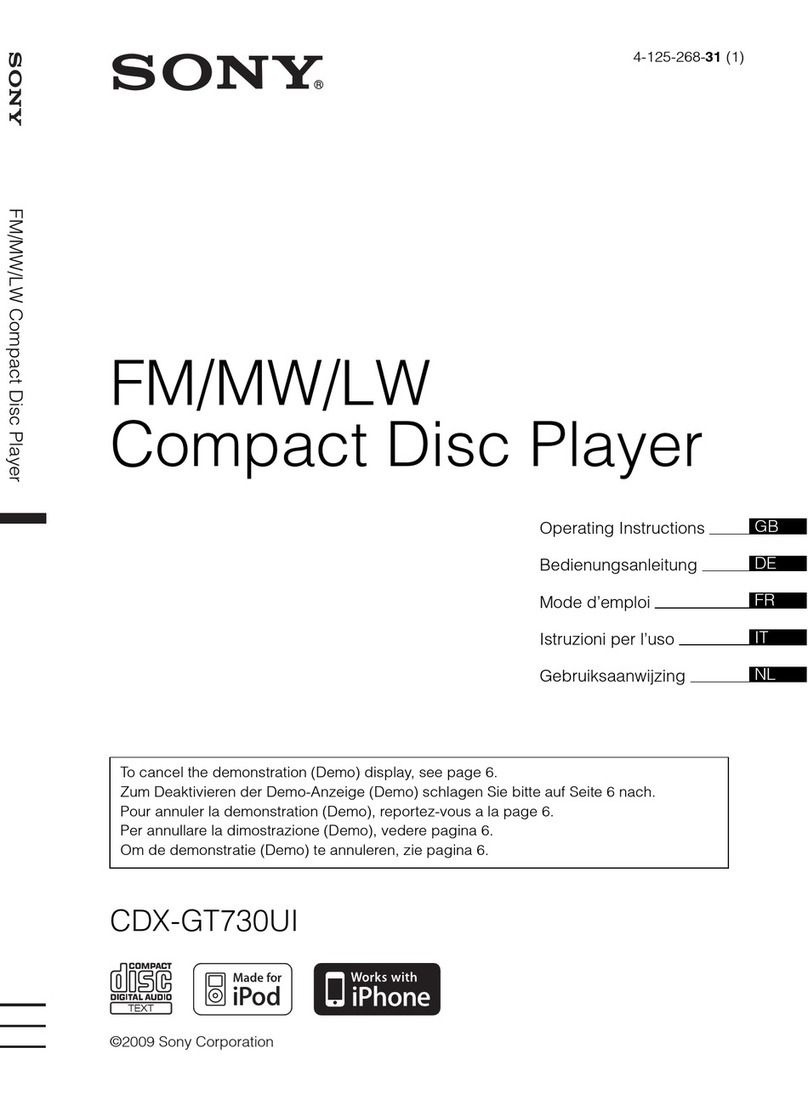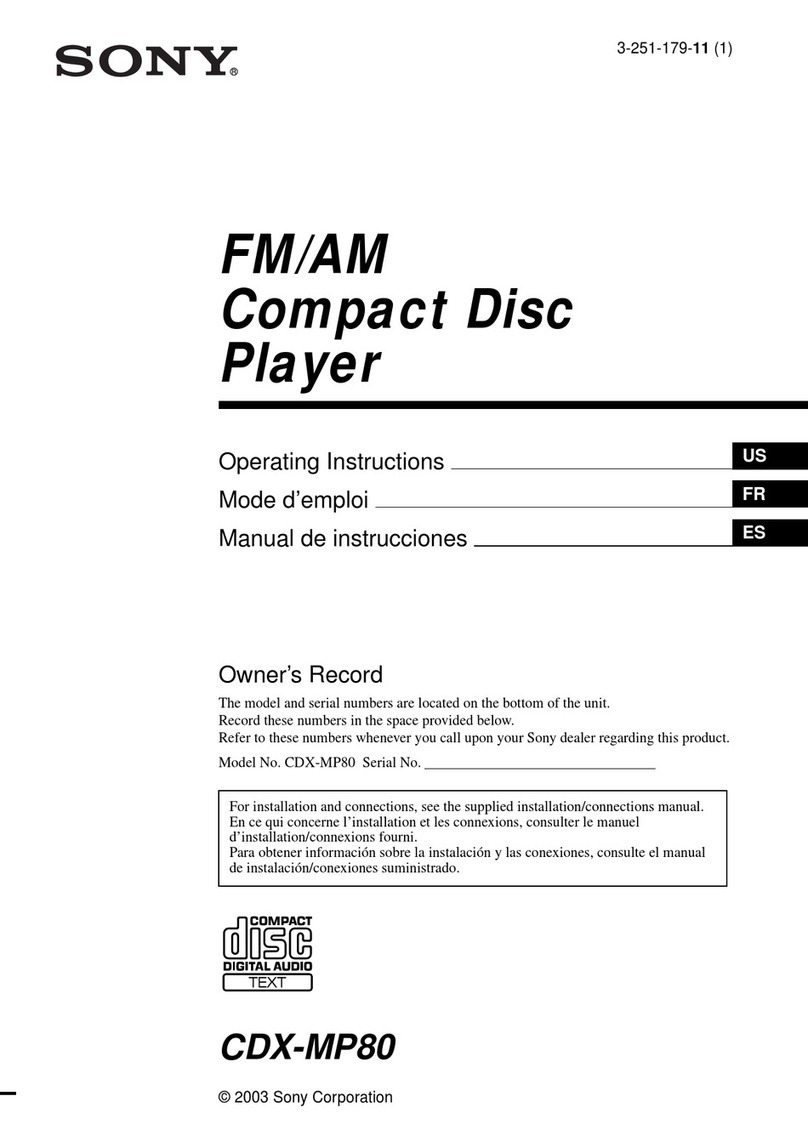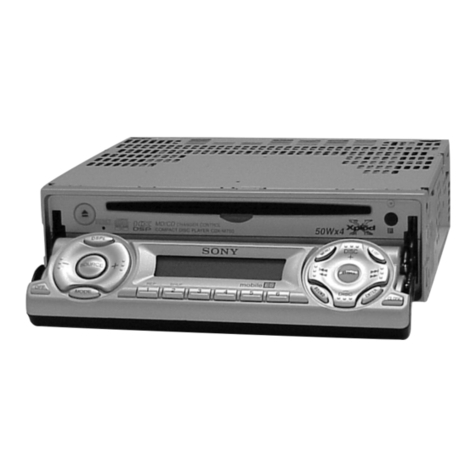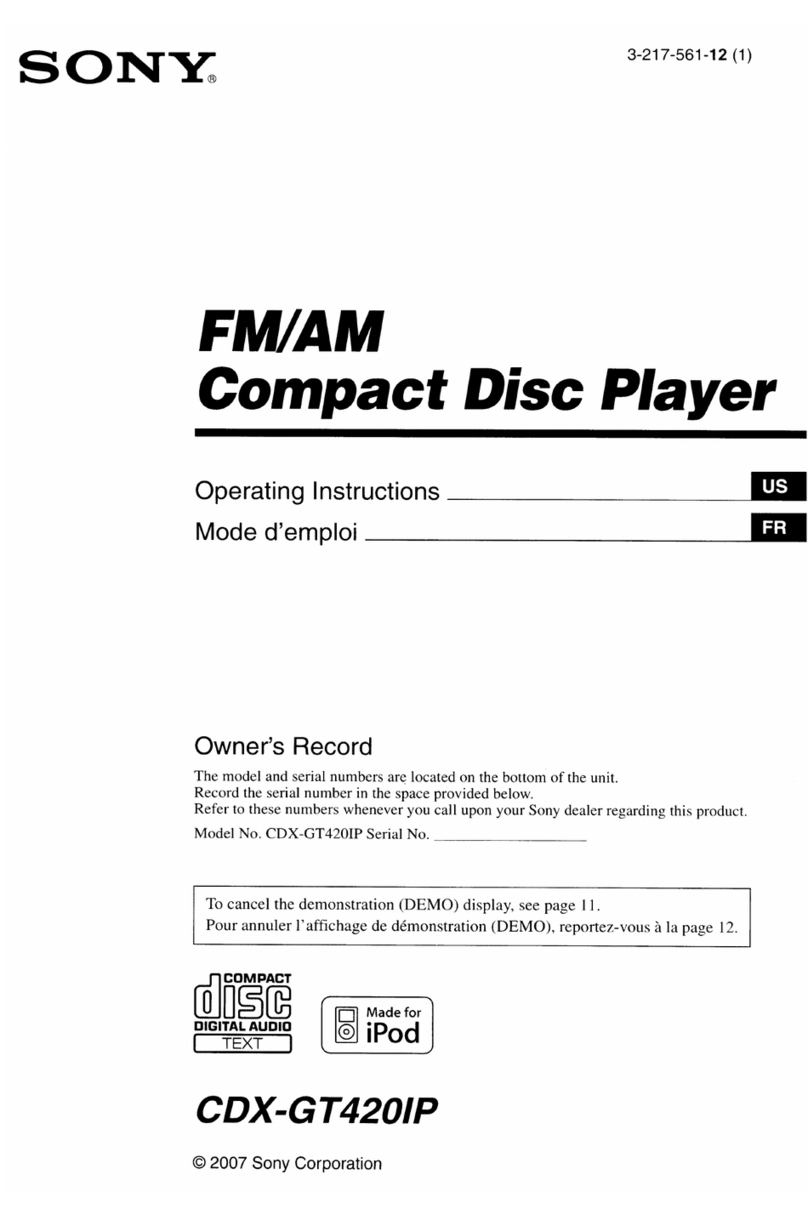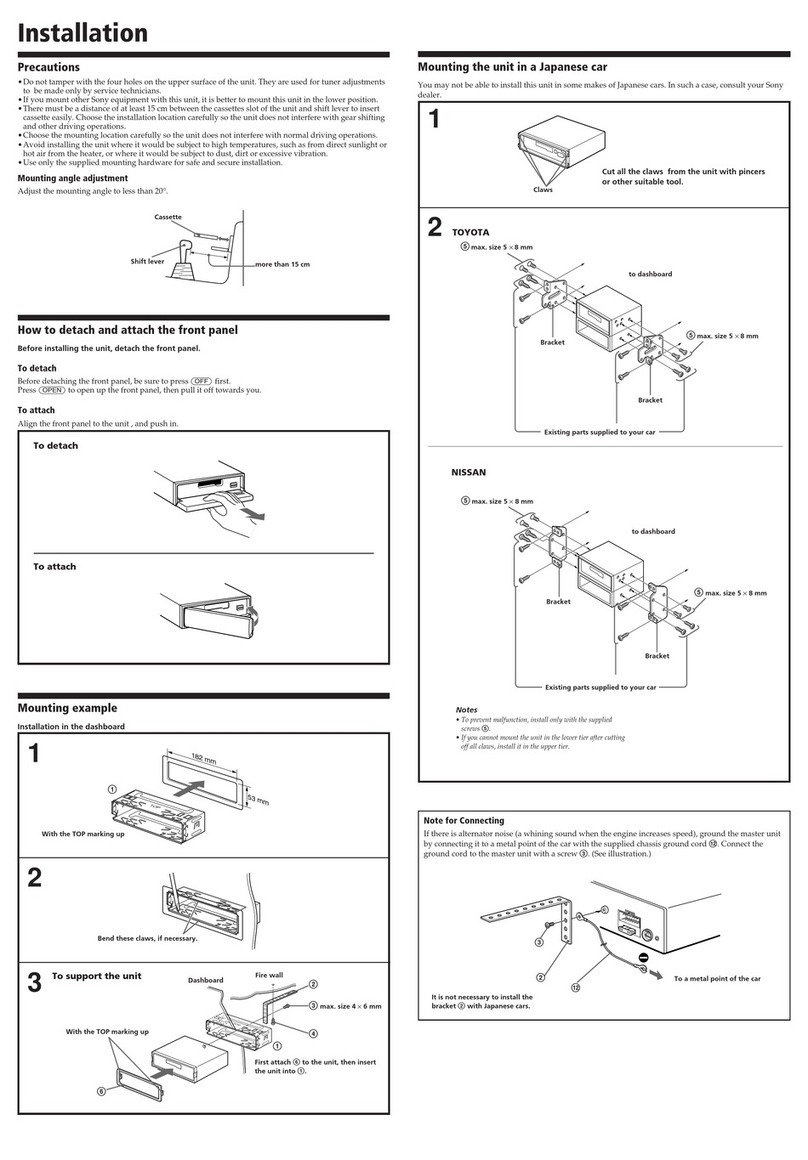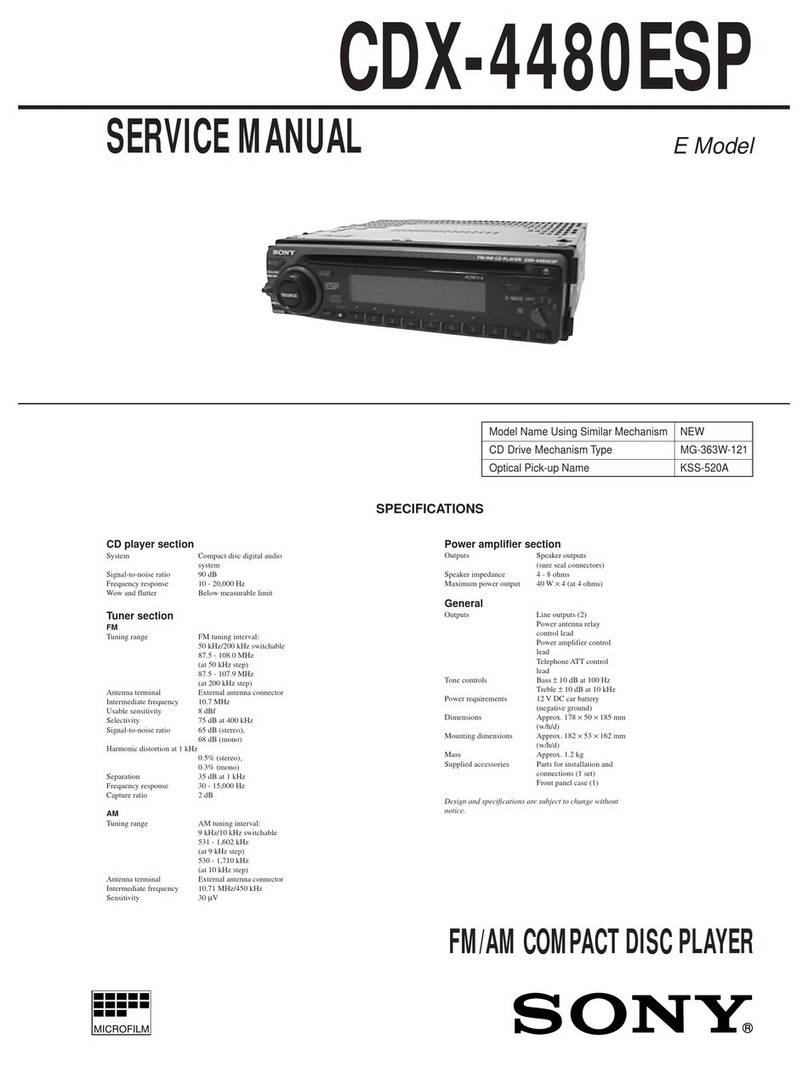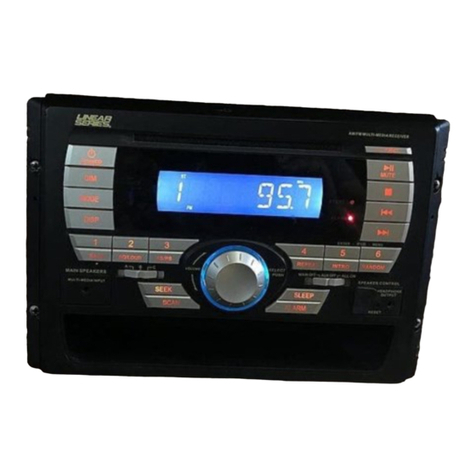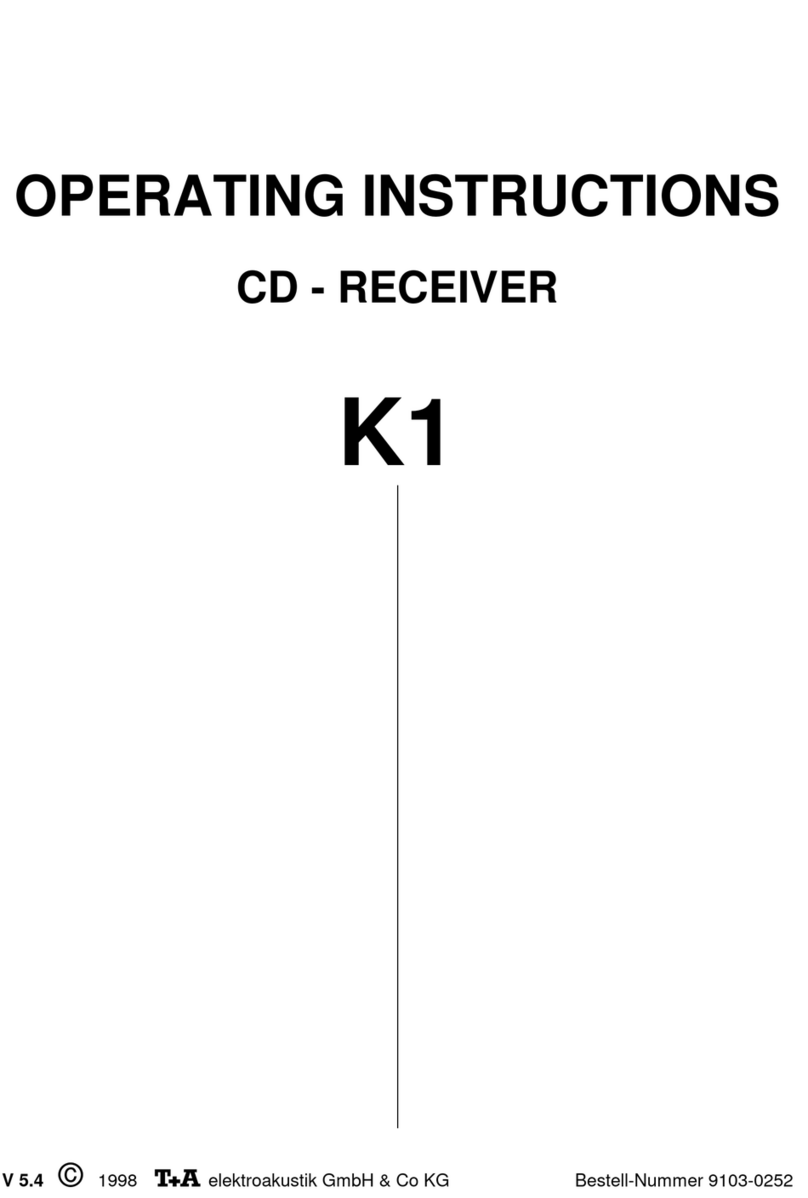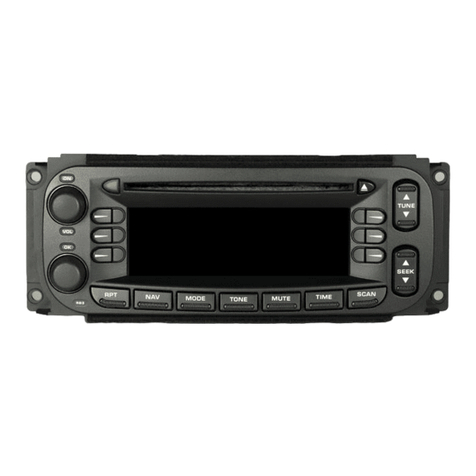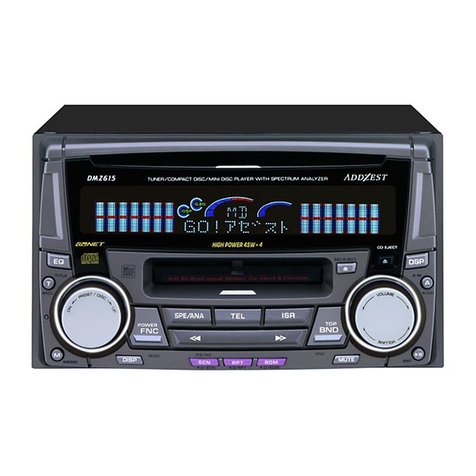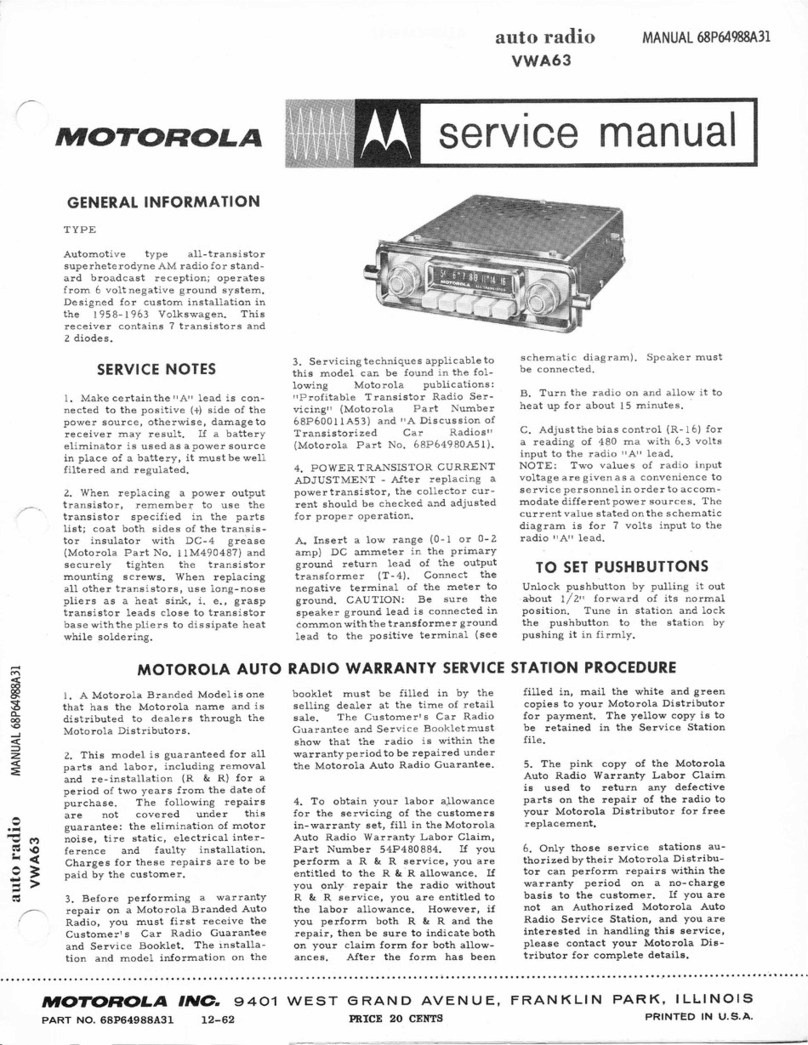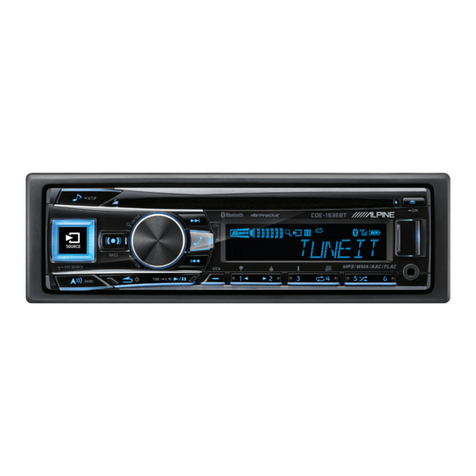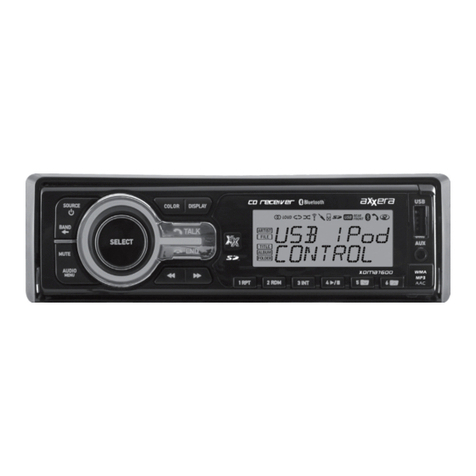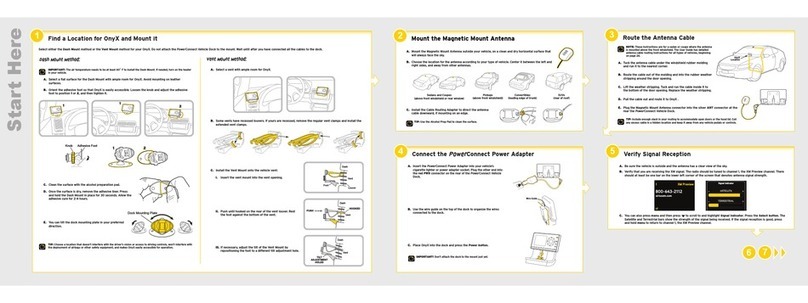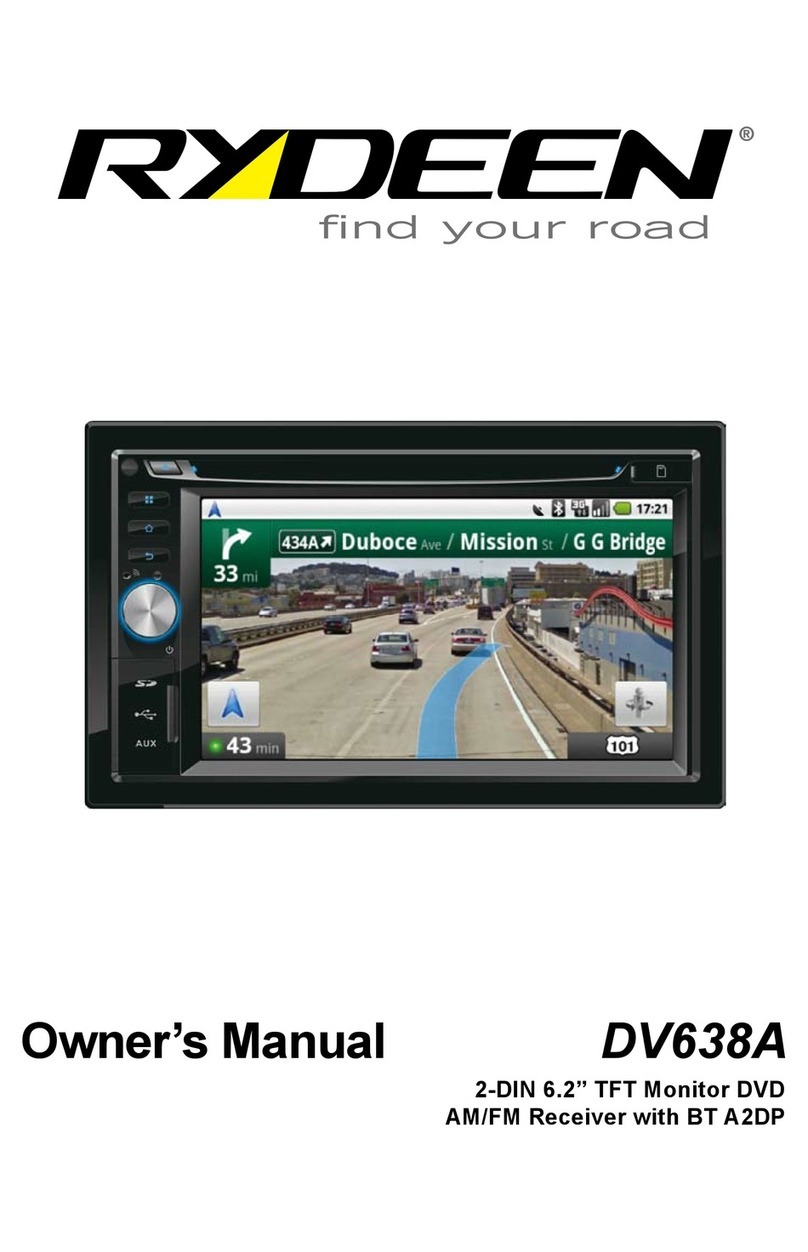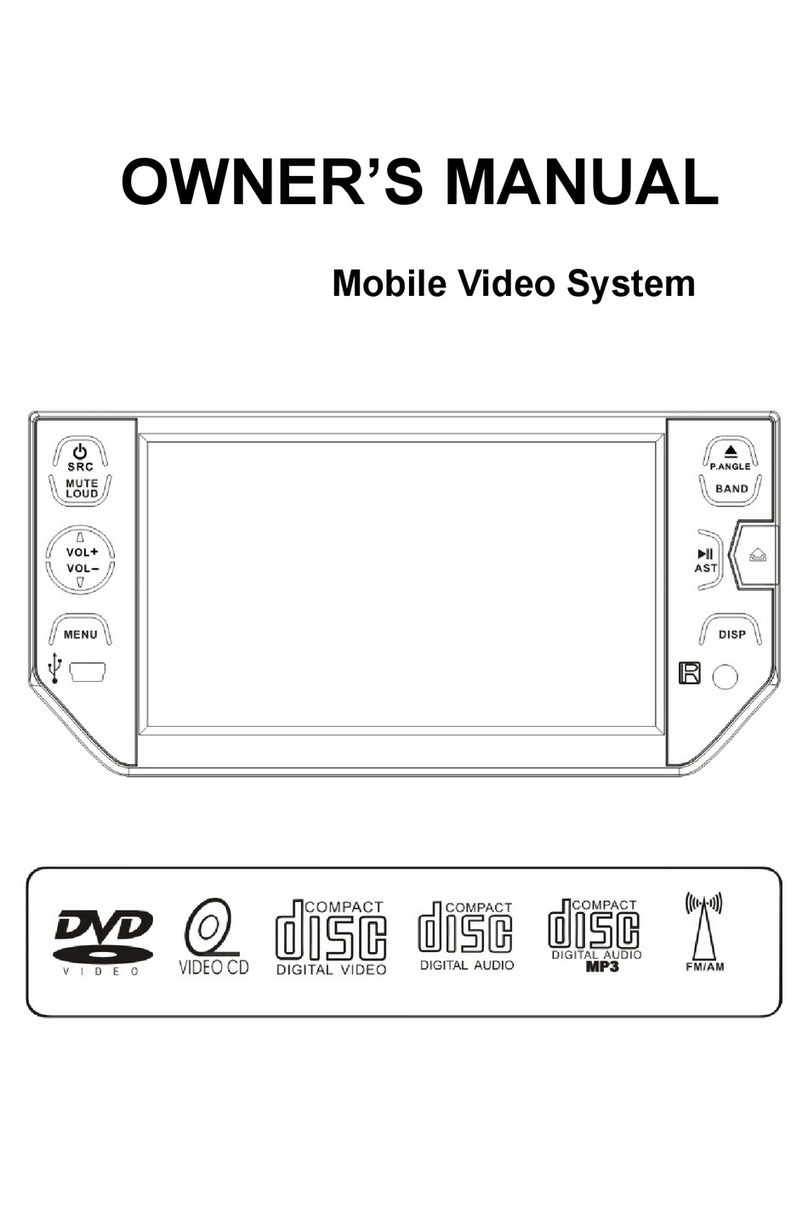SERVICE MANUAL
Sony Corporation
Audio&Video Business Group
Published by Sony Techno Create Corporation
HCD-EC69/EC79/EC99
SPECIFICATIONS
COMPACT DISC RECEIVER
9-889-442-03
2009I05-1
© 2009.09
AEP Model
E Model
HCD-EC69/EC79/EC99
Russian Model
HCD-EC69/EC99
Ver. 1.2 2009.09
• HCD-EC69 is the amplifier, USB, CD player and
tuner section in MHC-EC69.
• HCD-EC79 is the amplifier, USB, CD player and
tuner section in MHC-EC79.
• HCD-EC99 is the amplifier, USB, CD player and
tuner section in MHC-EC99. Photo: HCD-EC99
•“WALKMAN” and “WALKMAN” logo are registered trademarks of Sony Corporation.
•MICROVAULT is a trademark of Sony Corporation.
•MPEG Layer-3 audio coding technology and patents licensed from Fraunhofer IIS and
omson.
•Windows Media is a registered trademark of Microso Corporation in the United States
and/or other countries.
e following measured at AC 230 V, 50/60 Hz (European and
Russian models)
e following measured at AC 120, 127, 220, 240 V, 50/60 Hz
(Other models)
HCD-EC99
Front Speaker:
Power output (rated):
Low channel
50 W+ 50 W(at 8 Ω, 1 kHz, 1% THD)
Highchannel
50 W+ 50 W(at 8 Ω, 8 kHz, 1% THD)
RMS output power (reference):
Low channel
65 W+ 65 W(per channel at 8 Ω, 1 kHz, 10% THD)
Highchannel
65 W+ 65 W(per channel at 8 Ω, 8 kHz, 10% THD)
Subwoofer:
RMS output power (reference):
90 W(at 4 Ω, 80 Hz, 10% THD)
HCD-EC79
Power output (rated):
Low channel
55 W+ 55 W(at 8 Ω, 1 kHz, 1% THD)
Highchannel
55 W+ 55 W(at 8 Ω, 8 kHz, 1% THD)
RMS output power (reference):
Low channel
75 W+ 75 W(per channel at 8 Ω, 1 kHz, 10% THD)
Highchannel
75 W+ 75 W(per channel at 8 Ω, 8 kHz, 10% THD)
HCD-EC69
Power output (rated):
50 W+ 50 W(at 6 Ω, 1 kHz, 1% THD)
RMS output power (reference):
70 W+ 70 W(per channel at 6 Ω, 1 kHz, 10% THD)
Inputs
PC IN(stereo mini jack):
Sensitivity 800 mV, impedance 22 kilohms
Outputs
PHONES (stereo mini jack):
accepts headphones with an impedance of
8 Ω or more
SPEAKER: impedance
HCD-EC79/EC99: 8 Ω
HCD-EC69: 6 Ω
SUBWOOFER (HCD-EC99 only): impedance 4 Ω
USB section
Supported bit rate:
MP3 (MPEG 1 Audio Layer-3)/WMA/AAC: 32 −320 kbps,
VBR
Sampling frequencies:
MP3 (MPEG 1 Audio Layer-3)/WMA/AAC: 32/44.1/48 kHz
(USB) port:
Maximum current: 500 mA
CD player section
System:
Compact disc and digital audio system
Laser DiodeProperties
Emission Duration: Continuous
Laser Output*: Less than 44.6μW
*
measurement at adistance of 200mm from
the objectivelens surface on the Optical
Pick-up Block with 7mm aperture.
Frequency response: 20 Hz −20 kHz
Signal-to-noise ratio: More than 90 dB
Dynamic range: More than 88 dB
is output is the value
Tuner section
FM stereo, FM/AM superheterodyne tuner Antenna:
FM lead antenna
AM loop antenna
FM tuner section:
Tuning range:
87.5 −108.0 MHz (50 kHz step)
Intermediate frequency: 10.7 MHz
AM tuner section:
Tuning range
European and Russian models:
531 −1,602 kHz (with 9 kHz tuning interval)
Latin American models:
530 −1,710 kHz (with 10 kHz tuning interval)
531 −1,710 kHz (with 9 kHz tuning interval)
Other models:
531 −1,602 kHz (with 9 kHz tuning interval)
530 −1,610 kHz (with 10 kHz tuning interval)
Intermediate frequency: 450 kHz
General
Power requirements
European and Russian models:
Mexican model:
Argentine model:
Other models:
AC 120, 220, 230 −240 V, 50/60 Hz, adjustable with voltage
selector
Power consumption
HCD-EC99: 175 W(0.5 Wat the Power Saving Mode)
HCD-EC79: 170 W(0.5 Wat the Power Saving Mode)
HCD-EC69: 110 W(0.5 Wat the Power Saving Mode)
Dimensions (w/h/d) (excl. speakers)
Approx.200 × 306 × 415 mm
Mass (excl. speakers)
HCD-EC99: Approx.6.5 kg
HCD-EC79: Approx.6.4 kg
HCD-EC69: Approx.5.4 kg
Designand specications are subject to changewithoutnotice.
AC 220 V
, 50/60 Hz
AC 127 V, 60 Hz
AC 230 V, 50/60 Hz
Model Name Using Similar Mechanism HCD-EC78
Mechanism Type CDM88A-K6BD90-WOD
Base Unit Name BU-K6BD90-WOD
Optical Pick-up Block Name KSM-213DCP
